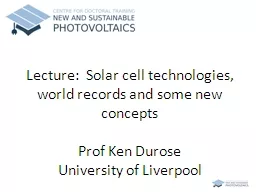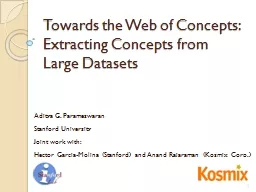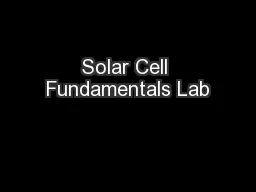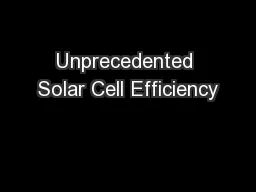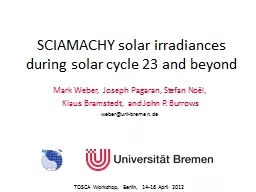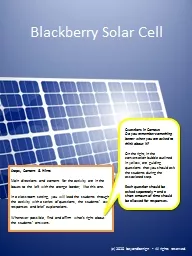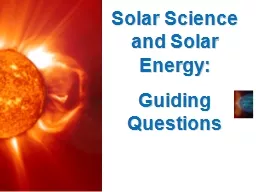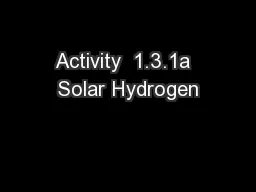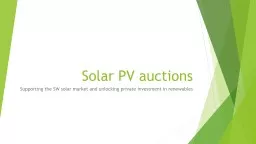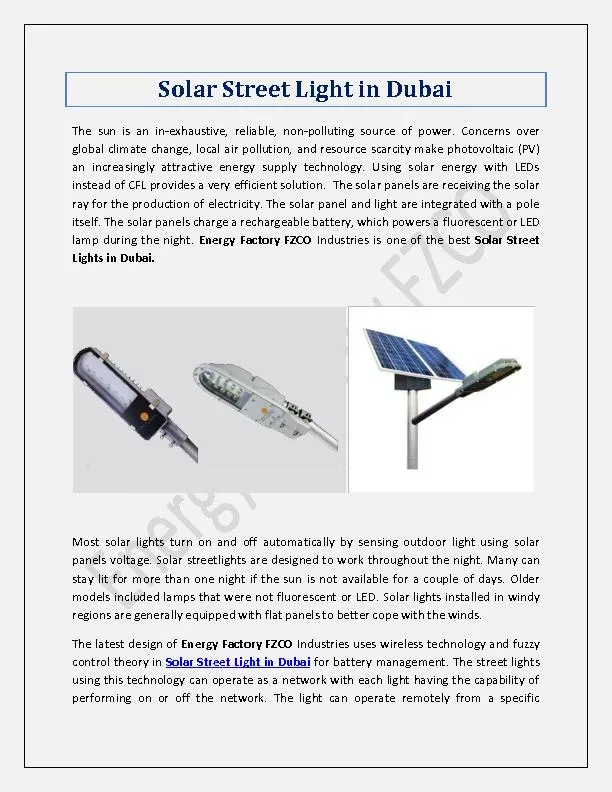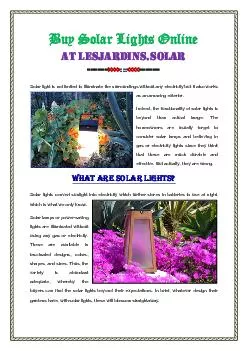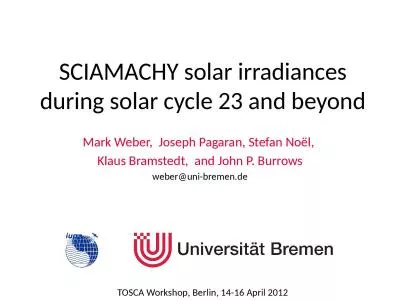PPT-Lecture: Solar cell technologies, world records and some new concepts
Author : min-jolicoeur | Published Date : 2018-03-09
Prof Ken Durose University of Liverpool Review papers on PV there are lots Materials Today 2007 NREL efficiency chart one of a kind cells httpwwwnrelgovncpvimagesefficiencychartjpg
Presentation Embed Code
Download Presentation
Download Presentation The PPT/PDF document "Lecture: Solar cell technologies, worl..." is the property of its rightful owner. Permission is granted to download and print the materials on this website for personal, non-commercial use only, and to display it on your personal computer provided you do not modify the materials and that you retain all copyright notices contained in the materials. By downloading content from our website, you accept the terms of this agreement.
Lecture: Solar cell technologies, world records and some new concepts: Transcript
Download Rules Of Document
"Lecture: Solar cell technologies, world records and some new concepts"The content belongs to its owner. You may download and print it for personal use, without modification, and keep all copyright notices. By downloading, you agree to these terms.
Related Documents

